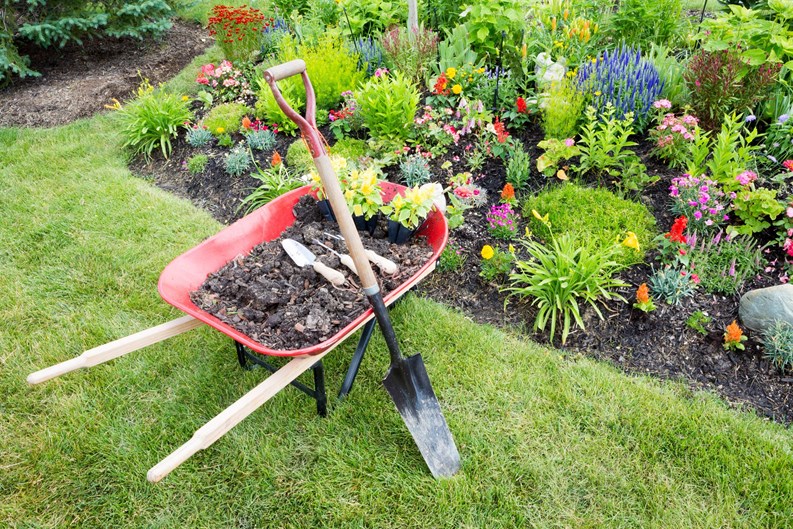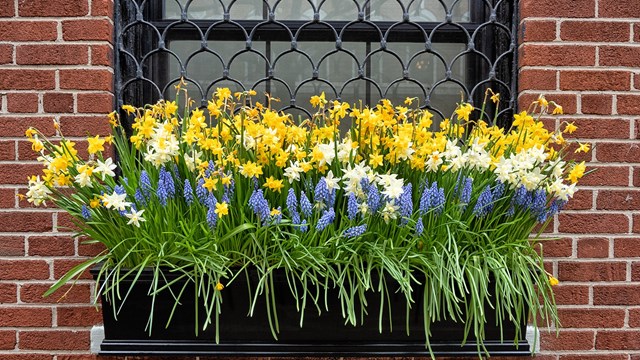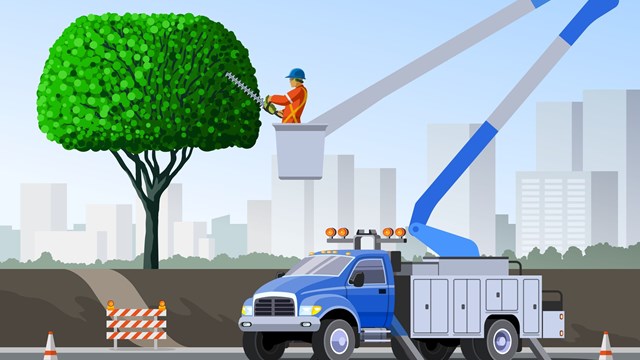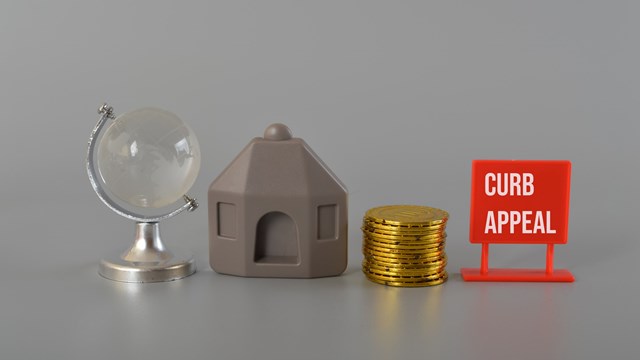Building maintenance follows a schedule based on the seasons, each of which presents a unique set of challenges to a co-op or condo. At certain times of the year, it just makes sense to do certain regular maintenance projects: weatherizing, boiler maintenance, winterizing gardens and landscaping in the fall; cleaning, repainting, pruning, and switching off the heating machinery in the spring, and so forth.
But while this seems straightforward, and while its true that there are plenty of seasonal tasks that can be done safely, effectively, and economically by in-house staff members, smart boards know when to hire professionals to do a job. When it comes to the delicate, often complex matter of caring for a community’s landscaping elements – be they decades-old trees, extensive flowerbeds, or even just a few planters out front, “The rookie mistake is hiring a rookie,” says David Protell of Chelsea Garden Center Inc. in Brooklyn, New York. “What happens is, somebody’s reading Southern Garden Living, and they have no clue what they’re doing, and you end up good-willed, and good-natured, but ill-advised.”
Money may not grow on trees, but neglected trees (and shrubs, and flowers) can certainly cost a great deal of money to rehabilitate or replace. That’s why it’s crucial that boards have at least a passing knowledge of seasonal landscape maintenance, and engage the right professionals to support their own in-house staff in holding to a sensible, well-informed schedule.
Spring
Spring is when nature emerges from the winter chill, when flowers bloom, when leaves return to the trees, when the birds and the bees and the bugs come out in full force.
Even if you’re not a landscaping pro, “It’s pretty obvious that you want to do most kinds of planting in the spring,” says Christy Webber of Christy Webber Landscapes in Chicago. “Spring is when you want to get any kind of seed down, once the soil temperatures are warm. Seed is about sunshine and warmth of soil. Any time after April… but into June it’s almost too late to try to germinate any seed. You can pay for it, but good luck. With no supplemental spring rain to help you along with your watering, your chances [of successful growth] are slim.”
With planting comes cleaning and maintaining the property. “In spring you want to get all the debris off the lawn, get all the crap out of the yard,” Webber continues. “You want all that warmth and sun that’s peeking through before the trees leaf out to hit your plants – and it also makes you feel better.”
“Come April 1st, the property needs to be cleaned up and raked, thus to prepare for a fertilization program,” suggests Sadi Dematos, president of Brothers Landscapers in Canton, Massachusetts. “Fertilization must then be applied so the grass is treated properly. Then you can mulch and plant. And, depending on your irrigation system, you’ll want to mow every week.”
In denser urban areas, tree pits take on added significance. “The first commitment would be working out a cyclical program for the street trees,” says Protell. “They’re usually a key component to most of these buildings, since they’re lining the path into the front doors. You want to pay attention to working out a cyclical flower program for the tree pits,” he says, “starting with Dutch bulbs that would be planted in the fall so that you have either tulips, daffodils, or hyacinths coming up in the early spring. In a perfect world, these bulbs are installed by the landscape team in November to come up in April, so they’re flowering for Easter.”
Summer
Summer is when people are outdoors the most, so the landscaping becomes especially important during the warmer months. Quality landscaping is obvious right away—and so, alas, is its opposite.
“There’s a lot of activity in the spring,” says Webber. “But the summer is when things settle down, and that’s when you want to start talking to your landscaper about other stuff. In May and June, the grass grows four inches a week, but in the summer, I’m not even mowing… I’m just leaving a trail of my tire tracks from the mower. So what are the crews doing that takes eight hours a day when the grass isn’t growing? In the summer we should free up time to do extra things, like weeding cracks, or cleaning up alleys of weed trees, or pruning.”
Dematos concurs, advising that pruning is best undergone in July and August. And, while mowing can be relaxed, or possibly eliminated entirely, as Webber suggests, depending on one’s climate, Dematos recommends adjusting the irrigation system and watering more frequently, to avoid burnt spots on the grass.
Because lawns don’t need as much mowing in the summer, but the weather tends to be good, there is plenty of time for project work. “In the summer, I expect my guys to do more, to go above and beyond the contract,” Webber says. “For example, a basement stairwell… during the summer, I love it when a crew can clean that out, take out all the leaves and debris. And that’s something that should happen. Go on down those steps, and clean out that drain!”
Fall
Fall is arguably the loveliest season—the leaves change colors, the bugs die off, and the weather is crisp, but not cold. In any ways, fall is the big finale for a property’s landscaping—but there is also the opportunity to shift gears and change things up with specifically autumnal plantings. In Northern climates, that often means things like ornamental kale and cabbage. According to Jimmy Turner, former Director of Research at the Dallas Arboretum, “Ornamental kale is one of the easiest bedding plants to grow, looks great all through the cool season, is bothered by few pests – and it’s edible! The large plants cover a lot of space quickly for a small investment, and require very little maintenance. The colorful foliage also makes a beautiful backdrop for flowering plants such as pansies, violas and tulips.”
Not all landscape pros are fans of salad greens.“You can go into kale and cabbage mode,” Protell says, “or you can wait and plant the fall bulbs and skip the kale and cabbage. The real question is whether you want to pull flowers that are looking perfectly good in October for the sake of putting in kale and cabbage.”
But the real challenge of fall is that which gives the season its name: the leaves. All those leaves. So many leaves.
“We’re way too nutty in the fall about this leaf removal, and getting all the leaves off our beds,” says Webber. “You pay me to haul off all this great organic material, and then we compost it, bring it back, and we put it all back on [your flowerbeds] in the spring. Why can’t we just chill? Sure, in the spring you don’t want to see all the leaves and the cigarette butts and stuff from living in the city, but on the other hand, we can just blow all those leaves into the beds. We’re going to clean them out anyway. If you want to be green, do one good fall clean-up to get the leaves off your grass, and then blow the leaves into your flowerbeds. That will save you some money. And that’s a great fall thing to do, because the layer of dead leaves basically insulates everything for the winter.”
There is a big push now to be ‘greener’ and more environmentally conscious. Sometimes being more green means being more brown. “Good organic gardeners,” Webber says, don’t remove all the leaves, but rather use them as nature intended. “People think everything under there is going to be dead, but it’s amazing how God works, because once you pull it off, all of a sudden it just springs to life. And you’ve done so much to add organic material that you didn’t have to pay for, that your own trees created. It’s ridiculous how much money people spend on putting down compost.”
Winter
Winter is the least busy month for landscaping. There’s snow removal going on—and not much more.
Contrary to what many may think, “Cold winter can be really bad if we don’t have snow,” Webber says. “Snow is a great insulator. So when we don’t have snow, like this winter, everything’s exposed, and all the new stuff you planted will probably be heaved right up out of the ground. So you definitely want to make sure that if you’re planting, you want to get a layer of mulch down just to hold the heat in and keep the freeze out.”
Bulbs can be planted into January, if the ground isn’t too frozen, and produce flowers.
“Now in winter, you just sit back and you think about your landscape,” Webber says. “As a manager, that’s your front door. That’s the lipstick on the lady. That’s what’s going to sell your property. So it is important. When that landscape looks nice, people notice.”
Greg Olear is a freelance writer and novelist, and a frequent contributor to New England Condominium.










Leave a Comment